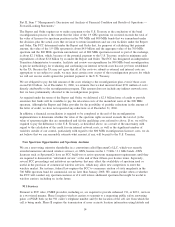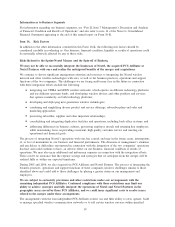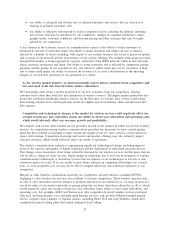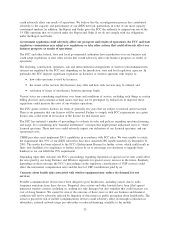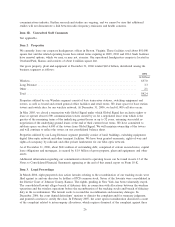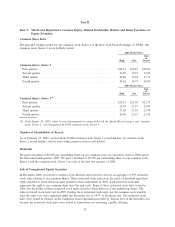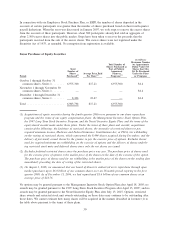Sprint - Nextel 2006 Annual Report Download - page 24
Download and view the complete annual report
Please find page 24 of the 2006 Sprint - Nextel annual report below. You can navigate through the pages in the report by either clicking on the pages listed below, or by using the keyword search tool below to find specific information within the annual report.One of the primary differentiating features of our Nextel-branded service is the two-way walkie-talkie service
available on our iDEN network. A number of wireless equipment vendors, including Motorola, which supplies
equipment for our Nextel-branded service, have begun to offer wireless equipment that is capable of providing
walkie-talkie services that are designed to compete with our walkie-talkie services. Several of our competitors
have introduced handsets that are capable of providing walkie-talkie services. If these competitors’ services are
perceived to be or become, or if any such services introduced in the future are, comparable to our Nextel-
branded walkie-talkie services, a key competitive advantage of our Nextel service would be reduced, which in
turn could adversely affect our business.
Failure to improve wireless subscriber service and failure to continue to enhance the quality and fea-
tures of our wireless networks and meet capacity requirements of our subscriber growth could impair
our financial performance and adversely affect our results of operations.
We must continually make investments and incur costs in order to improve our wireless subscriber service and
remain competitive. In connection with our continuing enhancement of the quality of our wireless networks
and related services, we must:
kmaintain and expand the capacity and coverage of our networks;
ksecure sufficient transmitter and receiver sites and obtain zoning and construction approvals or permits
at appropriate locations;
kobtain adequate quantities of system infrastructure equipment and handsets, and related accessories to
meet subscriber demand; and
kobtain additional spectrum in some or all of our markets, if and when necessary.
Network enhancements may not occur as scheduled or at the cost that we have estimated. Delays or failure to
add network capacity, or increased costs of adding capacity, could limit our ability to satisfy our wireless
subscribers, resulting in decreased revenues. Even if we continuously upgrade our wireless networks, there can
be no assurance that existing subscribers will not prefer features of our competitors and switch wireless
providers.
Consolidation and competition in the wholesale market for wireline services could adversely affect our
revenues and profitability.
Our Long Distance segment competes with AT&T, Verizon, Qwest Communications, Level 3 Communications,
and cable operators, as well as a host of smaller competitors, in the provision of wireline services. Some of
these companies have built high-capacity, IP-based fiber-optic networks capable of supporting large amounts
of voice and data traffic. These companies claim certain cost structure advantages which, among other factors,
may allow them to maintain profitability while offering services at a price below that which we can offer
profitably. Increased competition and the significant increase in capacity resulting from new technologies and
networks may drive already low prices down further. AT&T and Verizon, as a result of their acquisitions,
continue to be our two largest competitors in the domestic long distance communications market. We and
other long distance carriers depend heavily on local access facilities obtained from ILECs to serve our long
distance customers, and payments to ILECs for these facilities are a significant cost of service for our Long
Distance segment. The long distance operations of AT&T and Verizon have cost and operational advantages
with respect to these access facilities because those carriers serve significant geographic areas, including many
large urban areas, as the incumbent local carrier.
Failure to complete development, testing and deployment of new technology that supports new services
could affect our ability to compete in the industry. In addition, the technology we use may place us at
a competitive disadvantage.
We develop, test and deploy various new technologies and support systems intended to enhance our
competitiveness by both supporting new services and features and reducing the costs associated with providing
those services. Successful development and implementation of technology upgrades depend, in part, on the
22




